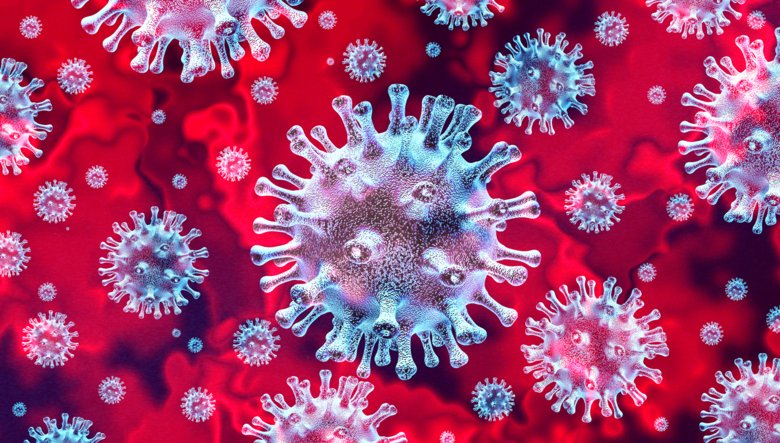COVID+5: Series Introduction

Roughly five years ago, the initial COVID-19 Lockdown was implemented. However, if any one of us had lain down to sleep Friday night of Parashat Teruma, March 1, 2020, just days prior to the initial COVID lockdown, and only awoke this half-decade later—like a latter-day Honi HaMe’agel, would he realize anything had transpired upon entering shul on Shabbat morning?
 Aside from the surprising number of Purell hand sanitizer dispensers that remain ever present in public spaces, the physical sanctuary appears identical. Tefilla seems indistinguishable from the pre-COVID prayer experience, and most Jewish interactions, at a glance, seem to mimic the reliable patterns that have remained unchanged for decades.
Aside from the surprising number of Purell hand sanitizer dispensers that remain ever present in public spaces, the physical sanctuary appears identical. Tefilla seems indistinguishable from the pre-COVID prayer experience, and most Jewish interactions, at a glance, seem to mimic the reliable patterns that have remained unchanged for decades.
I do not mean to imply that COVID did not have a significant impact on our world. There are seats in shul that now remain permanently empty, and for those families who lost loved ones or for individuals who continue to suffer from Long COVID or post-COVID conditions, pre-pandemic life is a distant memory.
However, from a broader communal perspective, from a synagogue perspective, from a Jewish educational perspective, from the perspective of our individual day-to-day religious and spiritual existence, has the COVID experience had an impact?
If the reality is that the pandemic came and went and the world has returned to “normal,” is this reversion to the status quo a good thing or a bad thing? Does it demonstrate the resiliency of our religious institutions, the firm foundation of our communal infrastructure and our unshakable religious convictions and beliefs? Or, on the contrary, does it speak to our calcified Jewish institutions, our rigid and unbending social constructs, and our fossilized spiritual and religious practices such that even a life-altering global pandemic could not disrupt our daily individual and communal routines.
Alternatively, if fundamental changes or even subtle, but material deviations arose as a result of the pandemic, what are these changes and in which specific areas of religious life did they arise? Are these developments positive or negative? If positive, what can we do to lean into and build upon them? Alternatively, if these shifts in behavior represent negative outcomes, how do we mitigate and learn from them?
In the days to come TraditionOnline will present several essays from a diverse group of writers who will share their perspectives and perceptions on the impact of the COVID pandemic on Yeshiva day school and high school education, the relationship between individuals and their Jewish communal institutions, and the relationship of the religious individual with God.
[Download the entire series as a printable PDF.]
Below are brief teasers describing each of these upcoming essays (and links once the column go live). After the series wraps, we will sit down with several of these authors for a conversation to be released on the Tradition Podcast, delving more deeply into these authors’ understanding and analysis of the impact of COVID on Jewish life. The hope and intent of this project is that this content will be the beginning of individual and communal engagements with the growth opportunities and lasting impact of the COVID-19 Pandemic.
Impact on Jewish Schooling
R. Josh Kahn, based on his experience at the Torah Academy of Bergen County and The Marsha Stern Talmudic Academy Yeshiva University High School for Boys will argue that COVID had various distinct impacts on the Yeshiva High School educational landscape. First, from a macro perspective, as ongoing lockdowns and quarantines continued to impose online and hybrid learning environments for over eighteen months, educators were forced to reconsider core values and educational priorities as Zoom learning necessitated shorter hours and more limited scheduling. This reevaluation of curriculum led to a second development, which was the need for educators to stretch their skills, revisit their lesson plans and curriculum, and move outside their comfort zones. While this education restructuring was often difficult to implement the results were often extremely successful. Once the classic educational components were initially addressed, Kahn describes how educators then pivoted to focus on the importance of mental health. Although prior to the pandemic, this need had already become a focus of additional resources and attention, the lockdowns, masking requirements, and quarantines placed a spotlight on the emotional stress that students were facing. This increased awareness of mental health issues was a positive educational development and has led to an ongoing focus on the emotional and mental health of pre-teen and teenage students. Finally, in light of the intensity of the COVID educational environment and the difficulties that educators faced, schools and their lay leadership gained a new sense of appreciation for educators in all of their capacities. According to Kahn, these shifts and adjustments demonstrated the strength and flexibility of Jewish educational institutions and should rekindle within the broader Jewish community an understanding of the importance of our Yeshiva system and the need to ensure that the next generation of educators are inspired and incentivized to make Jewish education a career.
In contrast, Rabbi Lenny Matanky, Dean of Ida Crown Jewish Academy, will look through the lens of the educational impact that COVID continues to have on students and young adults. Matanky describes the changes he and his staff have had to address post-pandemic as student resiliency, basic skills, knowledge, and certain interpersonal skills have declined or suffered material setbacks as a result of the COVID experience. By recognizing and understanding the scope of these setbacks, educators have become more sensitive to these issues and have internalized that teachers, administrators, and the community at large, must redouble their efforts to restore the educational landscape and give students the skills and resources they need to succeed in light of the varied setbacks caused by COVID.
The Individual and the Community: The View from the Pulpit
Rabbi N. Daniel Korobkin, from his perspective as rabbi of Beth Avraham Yosef of Toronto Congregation, reflects on COVID’s lasting impact on Jewish communal life. He highlights significant shifts in synagogue attendance and communal engagement as many individuals left traditional shuls, either seeking more personalized prayer experiences (such as “block minyanim”) or opting out of attending services altogether, as the pandemic demonstrated to them that synagogue attendance was not integral to maintaining Jewish identity and social standing. Korobkin argues that this strained relationship between individuals and Jewish institutions has precipitated declining membership numbers, particularly among the younger generation, who feel less connected to the community and, thus, less inclined to pay membership dues. His assessment is not all negative as he does note certain positive outcomes of the COVID experience, including increased Torah learning opportunities and a restructuring of synagogue offerings to better meet the more diverse religious needs of a wide range of community members. Overall, Korobkin sees his own community as more fragmented but also more adaptable, with an uncertain but hopeful outlook for the future.
Pivoting from broad communal perspectives to a deep dive into a discrete contemporary issue, Rabbi Larry Rothwachs, rabbi of Congregation Beth Aaron of Teaneck, examines how the COVID-19 pandemic temporarily transformed the way the Jewish community celebrated life cycle events like weddings and bar/bat mitzvas. During the height of the pandemic, restrictions forced families to embrace simpler, more intimate gatherings, which many found deeply meaningful and spiritually fulfilling. These minimalist events allowed the participants to focus on the essence of the substantive simcha, joy, holiness, and intimate connection, free from the pressures of extravagant spending and social expectations.
Rothwachs had hoped that the pandemic would serve as a lasting catalyst for change, prompting a shift toward more sincere and modest celebrations. However, as restrictions lifted, the community quickly reverted to its previous culture of excess, often even exceeding pre-pandemic levels of opulence. He laments the missed opportunity for communal introspection and recalibration and calls for a courageous return to value-driven celebrations—ones that prioritize meaning, family, and connection to God over grandeur and spectacle.
Converting Crisis to Personal and Communal Growth
Gila Muskin Block, Executive Director of Yesh Tikvah, will discuss how the COVID pandemic and the intense and often lengthy periods of seclusion caused by lockdowns and quarantines offered the broader Jewish community a window into the loneliness and sense of exclusion that individuals and families struggling with infertility within our community regularly face. Muskin argues that COVID offered us an opportunity to grow and develop our empathetic muscles. However, it appears that rather than building on the emotional experiences caused by the pandemic and using those experiences as a catalyst to destigmatize and further integrate those individuals, couples, and families struggling with infertility into our communal fabric and lifecycle events it appears that the exact opposite may have occurred as the desire to avoid confronting the COVID experience has caused both individuals and communities to shrink away from and distance themselves from the pain and anguish of being excluded.
While Muskin focuses on the specifics of empathy and compassion, Dr. Carl Hochhauser focuses on the broader mental health implications of the pandemic and, more specifically, on the concept of post-traumatic growth. He marshals a broad array of sources, both academic and anecdotal, which indicate that those who faced significant challenges during the pandemic may be able to build on those experiences and affect profound growth in spirituality and/or religiosity. While the further destigmatization of the importance of mental health considerations was a positive outcome of the pandemic, treating those whose mental health was affected is an ongoing challenge that may offer valuable insights into the possibility for growth and recovery within the community at large.
Listen to the authors discuss these columns on the Tradition Podcast.
We hope you will find this upcoming content stimulating and that it will encourage your families and communities to engage in the reflective work needed to generate lessons from the traumas our world endured five years ago. [Download the entire series as a printable PDF.]
Yehuda Halpert, guest editor of this special TraditionOnline series, is the Rabbi of Congregation Ahavat Shalom in Teaneck, NJ, and an attorney and tax counsel at Debevoise & Plimpton, LLP. He is also the author of “Speaking to an Empty Shul: Timeless Lessons from Unprecedented Times,” a rabbinic diary that describes his congregation’s historical and religious experience during the first year of the pandemic.
